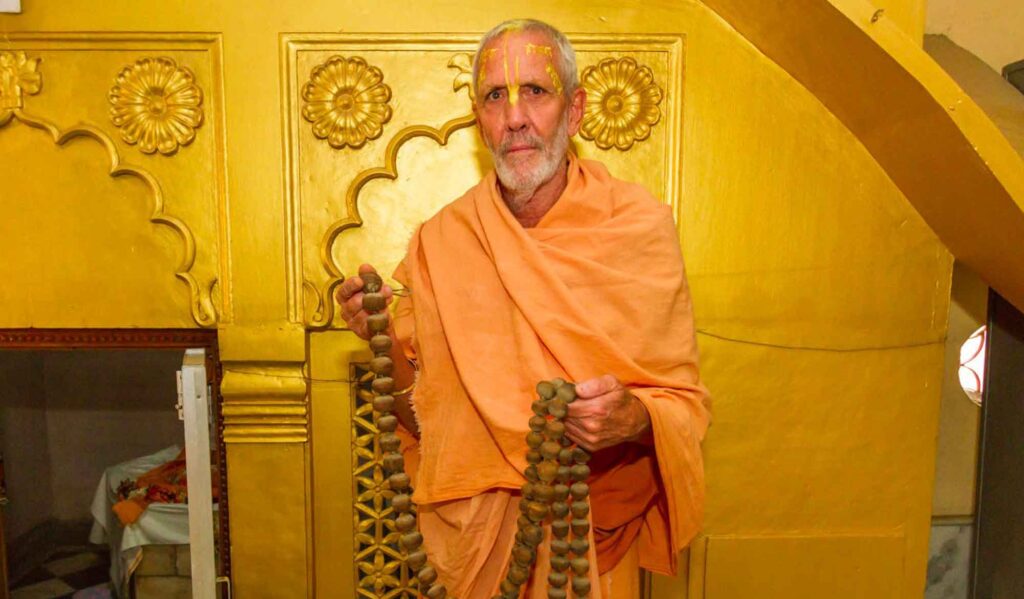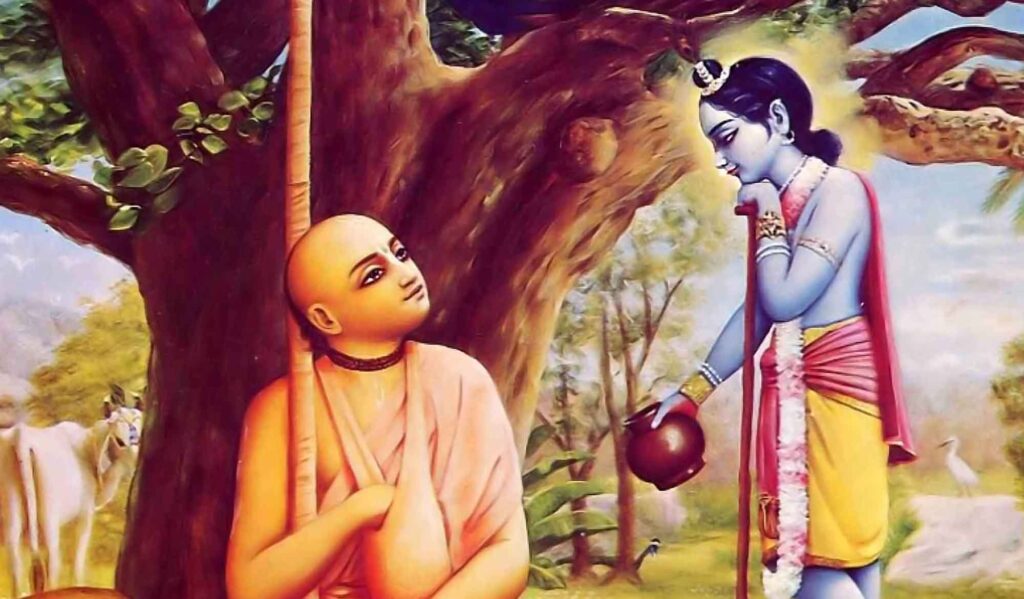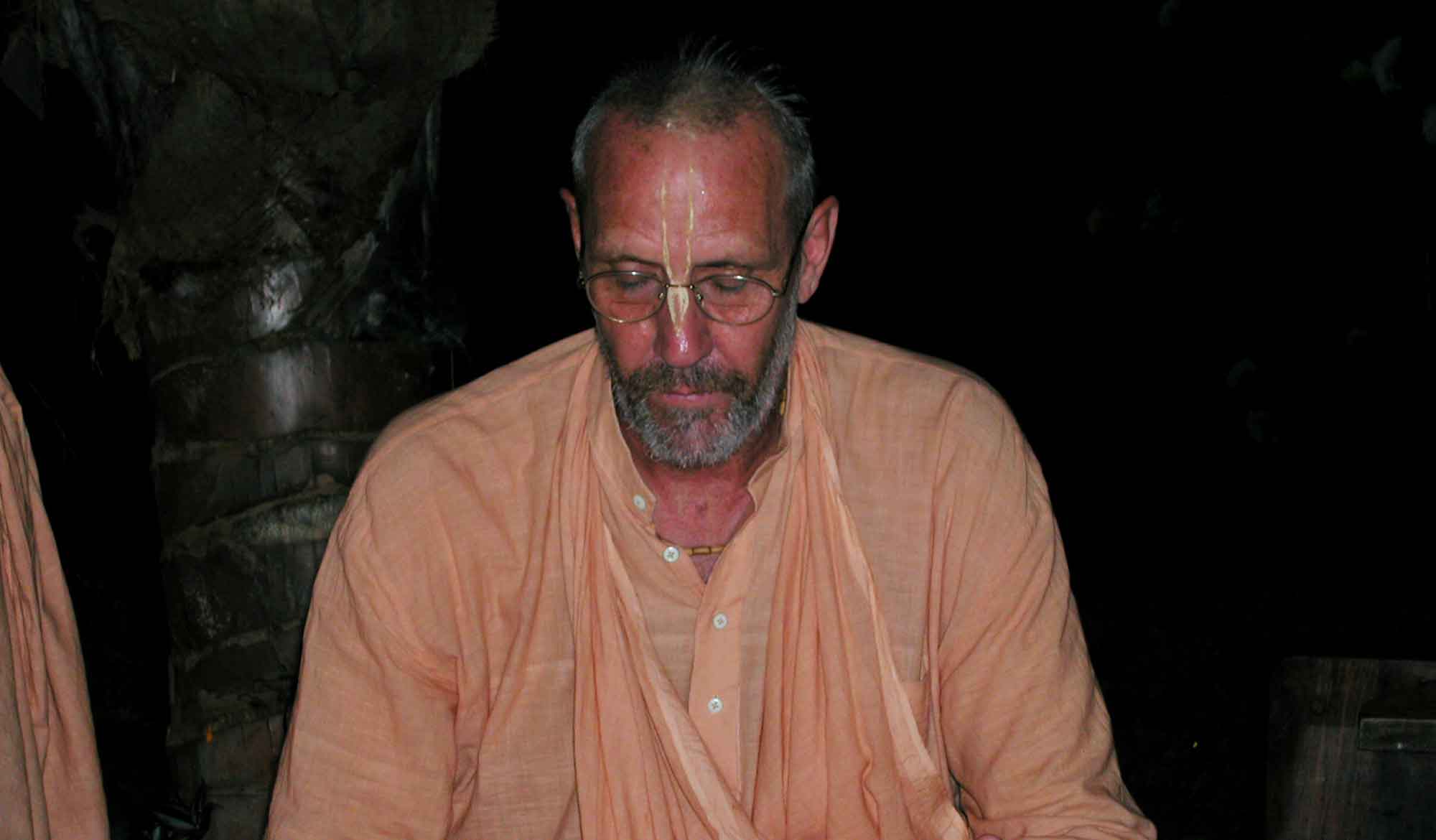by Swami B.G. Narasingha
In this short article, ‘The Colour for Sannyāsīs’ from December 2010, Śrīla Narasiṅgha Mahārāja describes the original colour of the cloth used by sannyāsīs in the line of Sarasvatī Ṭhākura and how in modern times, this has become obsolete.
In 1918 at Śrīdhāma Māyāpura on Gaura Pūrṇimā day, Śrīla Bhaktisiddhānta Sarasvatī Ṭhākura accepted sannyāsa, the tridaṇḍa staff, and sannyāsa cloth. But what was the colour of that cloth?
The colour was gheru-mati. Traditional gheru-mati dye has been used in India for centuries, especially by those in the line of Śrīpāda Madhvācārya. Gheru-mati, or simply gheru as it is called in Māyāpura and Vṛndāvana is a dark red clay from the earth. When cloth is dyed using larger quantities of gheru-mati it becomes dark red, and when lesser quantities are used the cloth becomes a lighter shade that resembles a very pale burnt brown colour. That was the colour that Bhaktisiddhānta Sarasvatī Thākura choose – light gheru.
But a sannyāsī in gheru is hard to find these days. Even Gauḍīya Maṭha sannyāsīs have adopted the conveniently pre-dyed cloth from the market place which sometimes resembles orange, tangerine, peach and pink. It is regrettable that pink is now the colour of choice for many sannyāsīs. Personally I find this colour anything but fit for a sannyāsī. This colour was not invented by any ācārya, sannyāsī or brahmacārī. No – the popular pink was invented by the shopkeepers of Loi Bazaar, the WalMart of Vṛndāvana.
When asked about the colour of sannyāsa-veśa, a sannyāsī often replies that his chosen colour (which he calls saffron) is a colour that “calms the mind.” The problem is that pink isn’t anything close to saffron and does nothing to calm the mind. In fact pink (especially ‘hot pink’) is just the opposite — it agitates the senses.
Convenience comes at a cost, and in this case I advocate ‘to hell with convenience’ and a return to gheru! But the likelihood of that ever happening on a large scale is little to none. However, in our mission, all brahmacārīs and sannyāsīs have traditional gheru coloured cloth. Tradition it seems, is most lacking in the contemporary Gauḍīya world.
Ultimately, colour of dress is an external consideration and many of our ācāryas were certainly not concerned about externals. But couldn’t we find a better colour than pink? I mean, the modern world has gone to outer space, invented nuclear bombs, invented the internet and the iphone — so couldn’t we come up with a better colour than pink?
The photo shown here was taken the day Sarasvatī Ṭhākura accepted sannyāsa. There are no colour photos of Sarasvatī Ṭhākura, but you can tell from this photo that his sannyāsa dress was indeed rustic.
In my mind, it is impossible to imagine this stalwart sannyāsī (our param-guru) standing there in pink…
More Articles by Swami B.G. Narasingha
The Sacred River Sindhu/Indus
‘The Sacred River Sindhu/Indus’ was posted by Swami B.G. Narasingha on his blog, narasingha.net, on October 2nd, 2011. In this short article, Narasingha Maharaja explains the significance of the River Sindhu and his pilgrimage to it. This article was later expanded into a bigger article called ‘Sindhu River – How India Got Her Name.’
Instructing the Guru
This article “Instructing the Guru” was written in April 2018 by Śrīla Narasingha Mahārāja who answers a question concerning a previous article wherein a Vaiṣṇavī writes a letter to her dīkṣā-guru and explains to him about the importance of śikṣā. In response, a question was raised by a devotee about the etiquette of a disciple instructing her guru.
The Atomic Ray – From Uniform Consciousness to Individual Conscious Units
In “The Atomic Ray - From Uniform Consciousness to Individual Conscious Units” written in 1996 Śrīla Narasiṅgha Mahārāja discusses the constitutional position of the jīva, according to Bhaktivinoda Ṭhākura and Śrī Caitanya-caritāmṛta.













